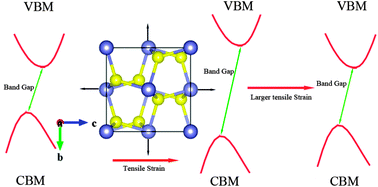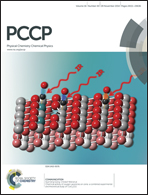Band gap engineering of FeS2 under biaxial strain: a first principles study
Abstract
The promising photovoltaic activity of pyrite (FeS2) is attributed to its excellent optical absorptivity and earth abundance, but its band gap, 0.95 eV, is slightly lower than the optimum value of 1.3 eV. Here we report the first investigation of strained FeS2, whose band gap can be increased by ∼0.3 eV. The influence of uniaxial and biaxial strains on the atomic structure as well as the electronic and optical properties of bulk FeS2 is systematically examined by the first principles calculations. We found that the biaxial strain can effectively increase the band gap with respect to uniaxial strain. Our results indicate that the band gap increases with increasing tensile strain to its maximum value at 6% strain, but under the increasing compressive strain, the band gap decreases almost linearly. Moreover, the low intensity states at the bottom of the conduction band disappear and a sharp increase in the intensity appears at the lower energy level under the tensile strain, which causes the red shift of the absorption edge and enhances the overall optical absorption. With the increase of the band gap and enhanced optical absorption, FeS2 will make a better photovoltaic material.


 Please wait while we load your content...
Please wait while we load your content...